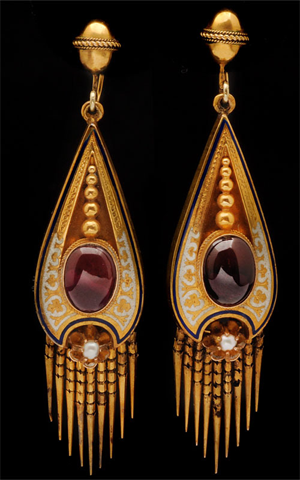
The Victorian Jewelry Era
The reign of Queen Victoria, from 1837 to 1901, sparked a significant shift in the world of jewelry design and fashion. Major shifts in the social fabric as well as technological advances impacted what women wore to adorn and express themselves while alluding to their social status.
Sub-Eras of Victorian Jewelry
There were three sub-eras within the Victorian age: The Romantic Period (1837-1861), The Grand Period (1861-1885), and The Aesthetic Period (1885-1901). Each era had its unique style, but common elements were prevalent throughout Victorian jewelry.
Common Elements in Victorian Jewelry
Delicately hammered, thin gold metalwork, Etruscan style bead work, light, lacey filigree in a twisted rope style, tassels, enamel, cameos, and hand engraving were consistent elements throughout the era. Additionally, jewelry often featured symbolic motifs such as hearts, flowers, and serpents, each carrying its own meaning.
Large, bold stones such as amethyst, diamond, carnelian, agate, bloodstone, jet, amber, quartz, emerald, ruby, sapphire, and many others were frequently used.
These pieces often included intricate designs and detailed craftsmanship, showcasing the remarkable skill of Victorian jewelers. The combination of these elements resulted in jewelry that was not only beautiful but also rich in sentiment and symbolism, making each piece a unique work of art.
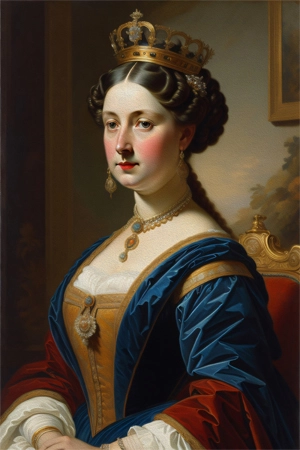
Photo: SK_Artist/Shutterstock
The Romantic Period (1837-1861)
The Romantic Period was at the beginning of Queen Victoria’s reign. A young, vibrant queen with her handsome husband, Prince Albert, were a worldwide sensation. The first ruling monarch family to live at the majestic Buckingham Palace, all eyes were on them. Just about every piece of jewelry that the Queen wore in public was remade in 18 to 22k gold and natural gemstones by talented jewelers of the day.
Themes and Symbols in Romantic Period Jewelry
A common theme in Victorian jewelry during the Romantic Period was young love, reflecting the romance between Queen Victoria and Prince Albert. Jewelers crafted designs with shapes like hearts, love knots, garters, buckles, vines, hands, and eyes. When Prince Albert gave Queen Victoria a snake ring, symbolizing eternal love, as an engagement ring, snakes became hugely popular in jewelry pieces.
Impact of the Industrial Revolution on Jewelry
The Industrial Revolution was in full swing, leading to mass-produced, lower-priced versions of the Queen’s designs. Jewelry factories used materials like rolled gold, electroplate, pinchbeck, aluminum, and steel, making it possible for women of all social classes to enjoy fashionable jewelry. The advent of photography in 1826 and the media boom in the mid-1800s allowed people worldwide to read magazines and newspapers, further promoting the Queen’s fashion trends.

Photo credit: The Walter Art Museum
The Grand Period (1861-1885)
The Grand Period was a time of significant change for women, reflected in the bold designs of the period. With women making strides in business, politics, education, and gaining the right to vote, small and delicate was out, and bold was in. Women wanted to make a statement socially, professionally, and in fashion.
Influence of Scottish Jewelry
When the royal couple purchased a home in the Highlands of Scotland, they were impressed with locally made Scottish jewelry. Their collection included flexible bracelets, enameled brooches, and colorful pendants with earthy-looking stones like moss agate, bloodstone, and carnelian found in the nearby Highlands.

Photo credit: Dreamstime
Mourning Jewelry
Prince Albert’s death at the age of 42 led Queen Victoria into a period of mourning, wearing black clothes and mourning jewelry. This sparked a rise in demand for Victorian-era mourning jewelry made from materials like jet, black onyx, and ebony. Brooches were the most popular, but earrings and rings inlaid with fine lines of gold and tiny precious stones or seed pearls were also common.
The Aesthetic Period (1885-1901)
The Aesthetic Period was the last of the Victorian Period trifecta in jewelry. While big and bold jewelry dominated the Grand Period, the Aesthetic Period shifted to smaller, more discreet jewelry. The women’s movement had come a long way, and women wanted to be seen more as equals with their own free thoughts rather than over-feminized.

Photo credit: The Walter Art Museum
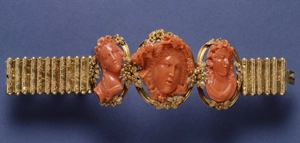
Photo credit: The Walter Art Museum
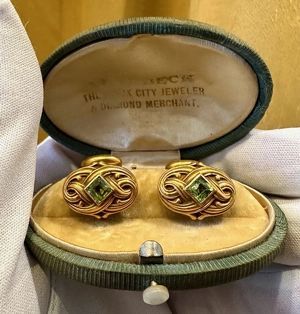
Photo credit: C.Blackburn Jewelers
Jewelry Trends in the Aesthetic Period
Daytime jewelry became much more casual or non-existent, reserved for special events. Similar gold-working techniques and materials were used as in other Victorian periods, but designs were generally daintier. Small, light earrings, simple brooches, and light, thin rings became popular.
Victorian Cameo Jewelry
Victorian cameo jewelry is renowned for its intricate designs and detailed craftsmanship. Originating from ancient traditions, cameo jewelry gained immense popularity during the Victorian era, reflecting the era’s fascination with classical antiquity. Cameo jewelry history dates back to ancient Greece and Rome, but it was Queen Victoria’s love for these pieces that truly popularized them in the 19th century. Typically featuring profiles carved into materials like shell or stone, Victorian cameos often depicted mythological figures, enhancing their timeless appeal.
Enduring Appeal
Today, Victorian jewelry continues to captivate collectors and enthusiasts with its exquisite craftsmanship and historical significance. Each piece tells a story of love, innovation, and the human desire to adorn and express oneself. The enduring legacy of Victorian jewelry is a testament to the creativity and spirit of the era, offering a window into a time when every piece of jewelry was a work of art and a reflection of the wearer’s identity.
Modern Collectibility and Fashion Influence
The enduring appeal of Victorian jewelry is also evident in its collectibility and influence on modern fashion. Antique Victorian pieces are highly sought after in auctions and by collectors, often fetching high prices due to their rarity and intricate workmanship. Additionally, contemporary jewelry designers frequently draw inspiration from Victorian motifs and techniques, incorporating them into modern designs. This fusion of old and new ensures that the timeless elegance of Victorian jewelry remains relevant and cherished.
By appreciating and studying Victorian jewelry, we keep alive the rich traditions and artistry of the past, ensuring that the beauty and significance of this remarkable era continue to inspire and enchant future generations.

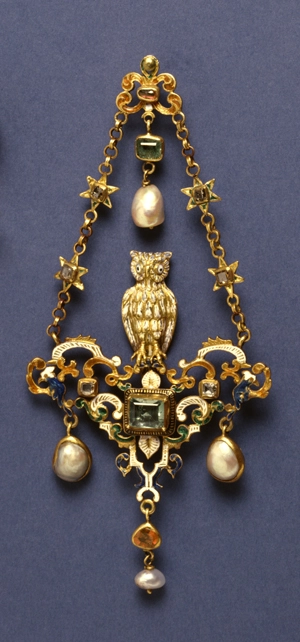
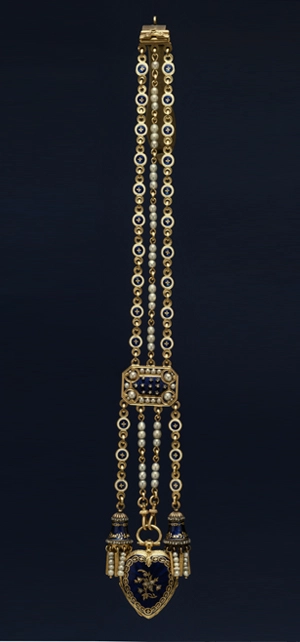
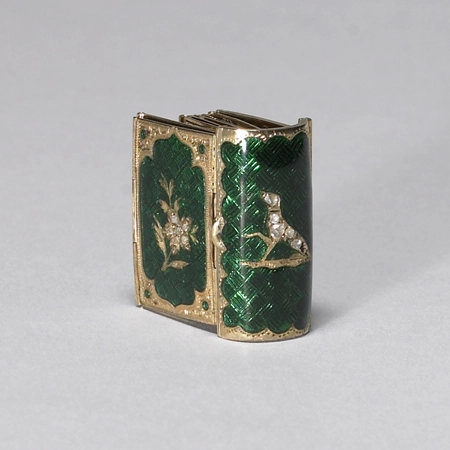
Photo credit: The Walter Art Museum
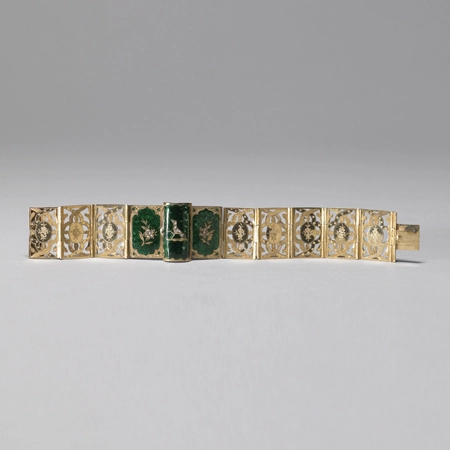
Photo credit: The Walter Art Museum
Get a Free Quote
Los Angeles Jewelry Buyer simplifies the process of selling Victorian era jewelry in Los Angeles for several compelling reasons:
- Local Convenience: Avoid the hassle of shipping. Complete your sale directly and immediately with us.
- See Every Step of the Evaluation: We prioritize transparency, conducting all assessments in your presence, ensuring your jewelry is always within sight.
- Expertise You Can Trust: Our evaluator is GIA (Gemological Institute of America) trained and certified, assuring you of their expertise in the diamond industry.
- Guidance Without Pressure: If your antique jewelry isn’t a fit for us, we’ll guide you to the best selling options and recommend other buyers. There’s no obligation to sell to us.
- Free Verbal Appraisals: We don’t charge for verbal appraisals. Our goal is to assist you in selling your vintage jewelry while gaining your trust and business.
Interested in learning more about why we’re your top choice for Victorian era jewelry in Los Angeles? Click on this link to discover additional reasons that make us the premier destination for selling vintage jewelry: The Best Place to Sell Vintage Jewelry.